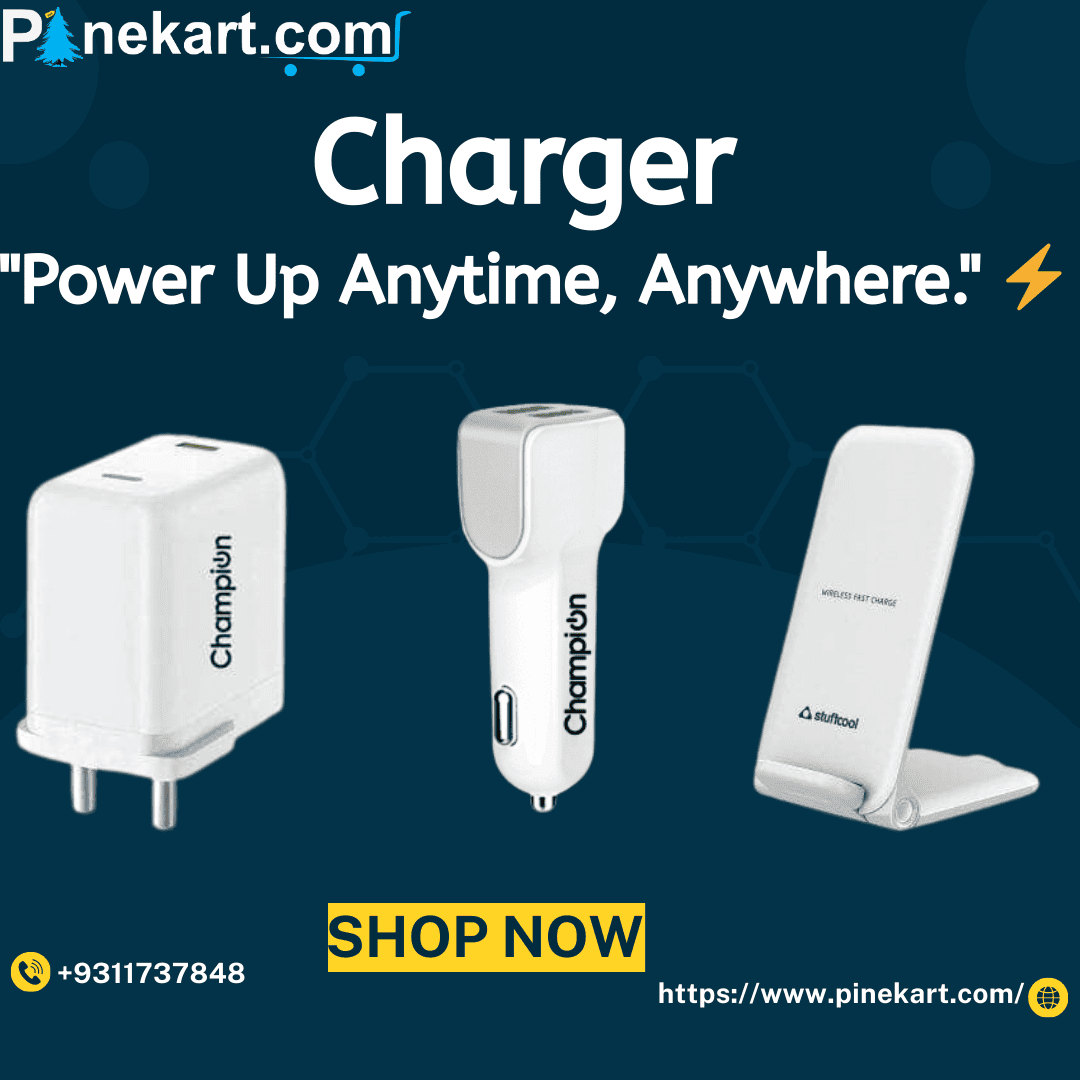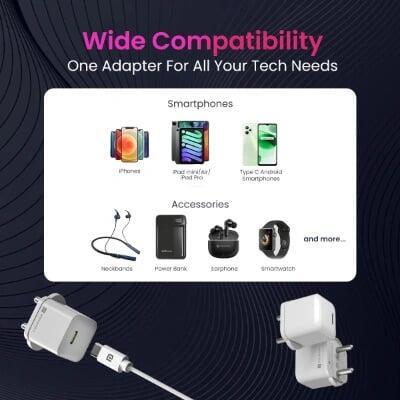In a world dominated by smartphones, laptops, tablets, and wearable tech, there's one small but mighty device that keeps it all going—the charger. Often overlooked, this essential gadget plays a vital role in our daily lives, ensuring our devices stay powered and ready for action. Without chargers, even the most advanced tech would be little more than a paperweight.
What Is a Charger?
What Is a Charger?
At its core, a charger is an electrical device that supplies power to rechargeable batteries or electronics. It converts electrical energy into a form that can be stored in your device's battery, allowing it to function without being permanently plugged into a power source.
The Evolution of Chargers
The Evolution of Chargers
Gone are the days of bulky, slow chargers that only worked with one specific device. Today, we’re in the age of fast charging, wireless charging, and multi-device charging stations. Let’s take a look at how far we've come:
Traditional Chargers: Basic models with limited speed and compatibility.
USB Chargers: Versatile and widely adopted, with different versions like USB-A, USB-C, and Micro-USB.
Fast Chargers: Designed to juice up devices in minutes instead of hours.
Wireless Chargers: Offering cable-free convenience using Qi technology.
Magnetic Chargers: Found in smart watches and newer phones, snapping neatly into place for charging ease.
Why Choosing the Right Charger Matters
Why Choosing the Right Charger Matters
Not all chargers are created equal. Using the wrong type can lead to slow charging, overheating, or even battery damage. Here are a few tips for picking the right one:
Know Your Device's Requirements: Check for voltage and wattage compatibility.
Choose Certified Chargers: Look for original or certified third-party products to avoid safety risks.
Consider Charging Speed: For busy lifestyles, fast charging is a game changer.
Multi-Port Options: Ideal for families or tech enthusiasts with multiple devices.
Types of Chargers Available Today
Types of Chargers Available Today
1. Wall Chargers
The most common type—plugs directly into a wall socket. Often comes with USB or USB-C ports for flexible use.
2. Wireless Chargers
Perfect for those who want a clutter-free desk. Simply place your phone on the pad, and charging begins automatically.
3. Car Chargers
Plug into your vehicle’s socket—great for charging on the go during commutes or road trips.
4. Portable Power Banks
Ideal for travel or emergencies. These battery packs store power and let you charge your devices anywhere, anytime.
5. Magnetic Wireless Chargers
Common in newer Apple and Android devices. They magnetically align for optimal power delivery.
Sustainability and Smart Charging
Sustainability and Smart Charging
As we become more eco-conscious, smart chargers that prevent overcharging and reduce energy waste are growing in popularity. Some even come with built-in power management systems that protect your battery’s lifespan while reducing electricity usage.
Frequently Asked Questions (FAQs) About Chargers
Frequently Asked Questions (FAQs) About Chargers
1. Can I use any charger with my device?
Not always. While many devices support universal charging standards like USB-C, it's important to check the voltage and wattage compatibility. Using the wrong charger may lead to slow charging, overheating, or even battery damage.
2. What is fast charging and how does it work?
Fast charging delivers higher power to your device's battery to reduce charging time. It requires both a compatible fast-charging charger and a device that supports fast charging technology like Quick Charge, PD (Power Delivery), or Warp Charge.
3. Is wireless charging slower than wired charging?
Yes, wireless charging is generally slower than wired options. However, newer wireless chargers now support fast wireless charging, which can significantly improve speed—but still not quite as fast as high-watt wired chargers.
4. Are power banks safe for charging phones?
Yes, as long as you use a reputable power bank with the correct voltage and overcharge protection. Cheap or counterfeit power banks can damage your device or pose safety risks.
5. What’s the difference between USB-A, USB-C, and Micro-USB?
USB-A: The older, rectangular standard.
USB-C: Newer, faster, and reversible connector used in most modern devices.
Micro-USB: Common in older devices; slower and not reversible.
6. Can overcharging damage my phone battery?
Modern smartphones come with built-in safeguards that prevent overcharging. However, using low-quality or incompatible chargers can still cause issues. Using smart or certified chargers is recommended.
7. Do chargers affect battery life?
Yes. Using high-quality, certified chargers can help maintain your battery’s health. Poor-quality chargers or excessive use of fast charging may degrade battery performance over time.
8. What is a magnetic charger and how does it work?
Magnetic chargers snap into place using magnets for proper alignment. They're commonly used in smart watches and newer smartphones for wireless charging, ensuring a secure and efficient charge.
Final Thoughts
Final Thoughts
While they might not get the spotlight like smartphones or laptops, chargers are the lifeblood of our tech-filled lives. From basic plug-ins to advanced wireless and fast-charging systems, chargers have evolved to meet the demands of modern users. Whether you're at home, on the road, or off the grid, having the right charger ensures your devices—and your day—stay fully powered.



